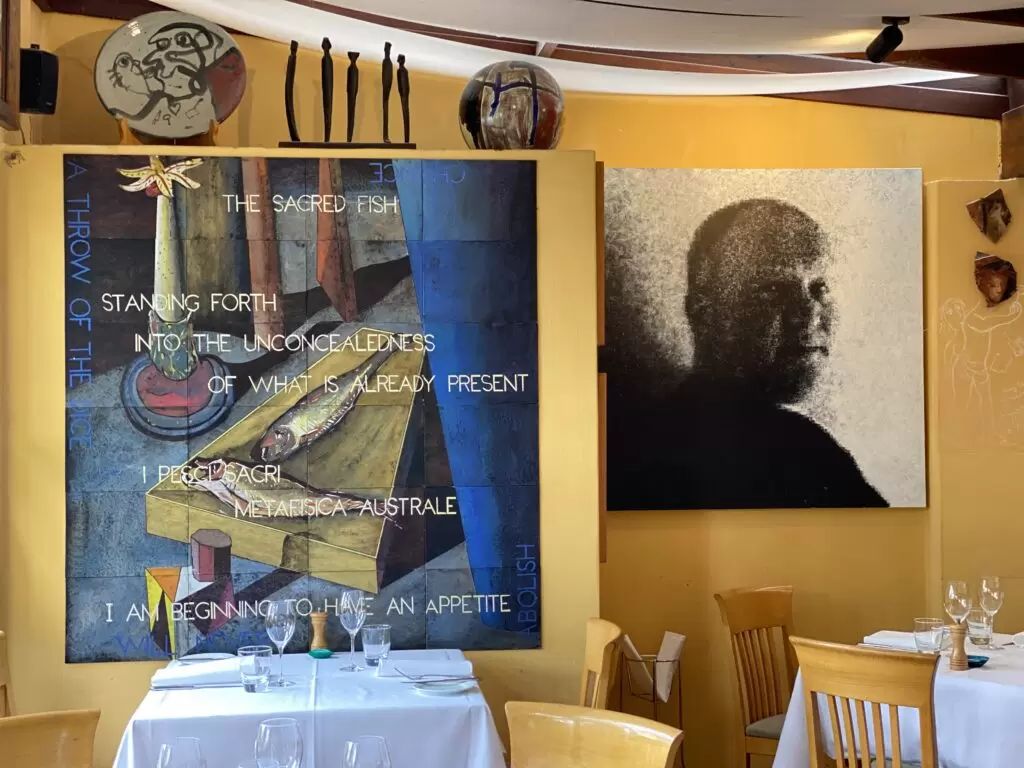.ART Digital Innovation in Art Nominee, Steve Miller: “I want to be a Part of the New Art World"
Steve Miller discusses the evolution of the art ecosystem and how ARTERNAL allows the art world to make data-driven decisions


Steve Miller is the Co-founder of a customer relationship management platform Arternal. Together with his Co-founders Sean Green and Raymond Nguyen they developed the platform to help professionals and organizations that sell art. Their team resides at NEW INC, an incubator for people working at the intersection of art, design, and technology. When asked about Arternal, Steve describes it as an integrated art gallery operating system that includes inventory and efficient workflow with CRM. “We are the first to bring this data software to the art world… traditional gallery technology focused on inventory, and our CRM keeps the focus on sales”, he adds.
“The art world tradition is a cross between intuition and the personal brain ledger of the gallery sales staff. We have been teaching the art world how to make data-driven decisions”

The team at Arternal holds its vision in line with the fundamental values the Digital Innovation in Art Award recognizes. The cost of brick and mortar is high, the price of talent is high, and thus, the galleries find value in the efficiency of the platform. While maintaining the privacy of its most prominent clients, Steve confesses, “household names of the gallery business are on the platform”.
“In a couple of words, data is the new paradigm shift,” says Steve. As an artist-turned technologist, there was a definite moment when he realized that the future is data-driven. “I worked at Cern, the Large Hadron Collider in Geneva, where I gave a lecture to a group called ‘The Theory Group'” he shares. At the centre, they would collide particles and create new particles, each having a new electrical charge that tells what the mass of the particle is. “All of a sudden you have billions of collisions and you’re using computers to sort through the data and figure out what data is important and significant,” he continues. These observations shed new light on his understanding of art and aesthetics, “the two cannot be exempt from data” Steve says, “So how do you understand the data of aesthetics?”
To answer this question, Steve shares his experience about data points influencing our perception of art:
“When I first came to New York, I had a distressing and illuminating observation. A dealer once said that they selected artists partly based on how many followers they have on Instagram”.
Examples like this are why he believes art business needs Arternal. He continues “you can’t afford to be inefficient, and you can’t keep all this data in your head”. Unfortunately, inefficient data can also lead to fallacies. A piece can be perceived as more important only because it costs more. “We all know it is not true, but that is the perception” he explains.
In the art world, relationships drive sales. Similarly, Arternal’s team realizes that relationships should drive tech as well. They acknowledge that a company such as Salesforce is one of the most successful CRM platforms in the world. They also understand that it is not appropriate for the art world. This realization is where the opportunity lies. “The art world needs simplicity, smooth UX and they don’t need the unnecessary features,” comments Steve. The team spent years researching the workflow of prominent galleries to develop their first products. “We came up with a mobile solution that allows gallerists to run entire gallery on the run” he says. There is also special attention towards agile operational solutions suitable for the gallery’s participation at Art Fair’s. “Galleries were spending millions of dollars on going to art fairs. And yet, they didn’t have the tools to collect the data that they were spending the money to get!” Steve adds.
 How .ART Domains Are Taking Artists Online Read More How to register a business email on .ART Read More Portfolio on .ART: How to showcase your creative work in 4 simple steps Read More
How .ART Domains Are Taking Artists Online Read More How to register a business email on .ART Read More Portfolio on .ART: How to showcase your creative work in 4 simple steps Read More
As an artist, Steve felt there was a choice he had to face. He could’ve “stayed on the sidelines”, as he puts it, and keep making art in the studio. On the other hand, he believed that full engagement in art required a “more than” approach. “Culture is a creative activity,” Steve says. “You can’t separate art from context anymore, or commerce. All these factors affect our perceptions of value and what we think the content of the work is,” he continues. This paradigm shift felt like a new phenomenon, and Steve knew he had to be a part of it. In such a way, Arternal allowed him and his team to explore the cultural data points and learn about aesthetics under new light.
Steve points out “there is this fantasy in the art world that an artist is this separate thing, but it’s not anymore”. He continues by quoting Andy Warhol from the book ‘Andy Warhol-From A to B and Back Again’, who observed and embraced the shifting nature of an artist’s role years ago.
“Andy Warhol said that the best art is business art. We’re coming closer to Warhol’s statement being the truth,” Steve concludes.
You can learn more about ARTERNAL visit https://arternal.com/
To view Steve Miller’s art, you can visit https://stevemiller.art/
Also published on Medium.






